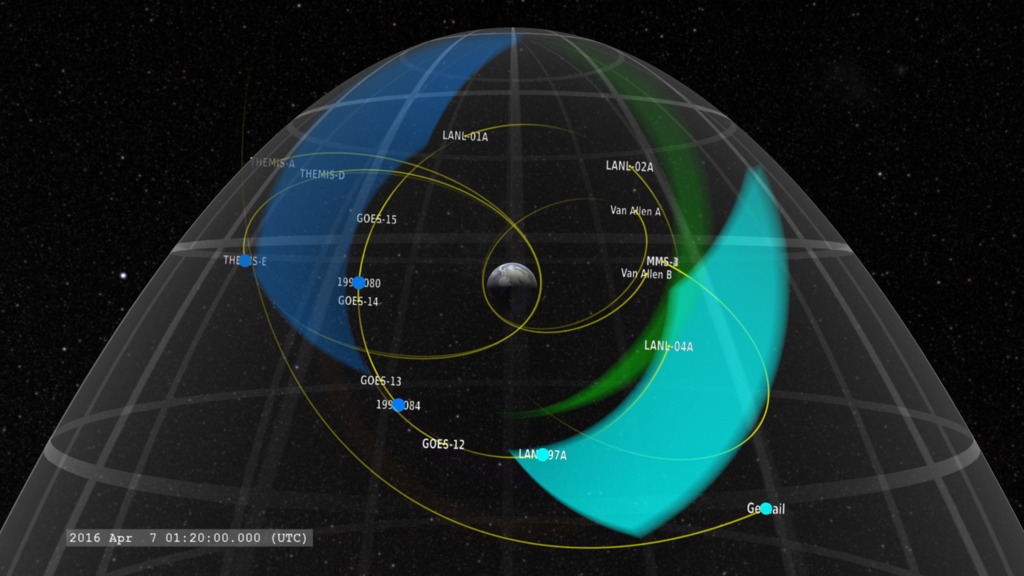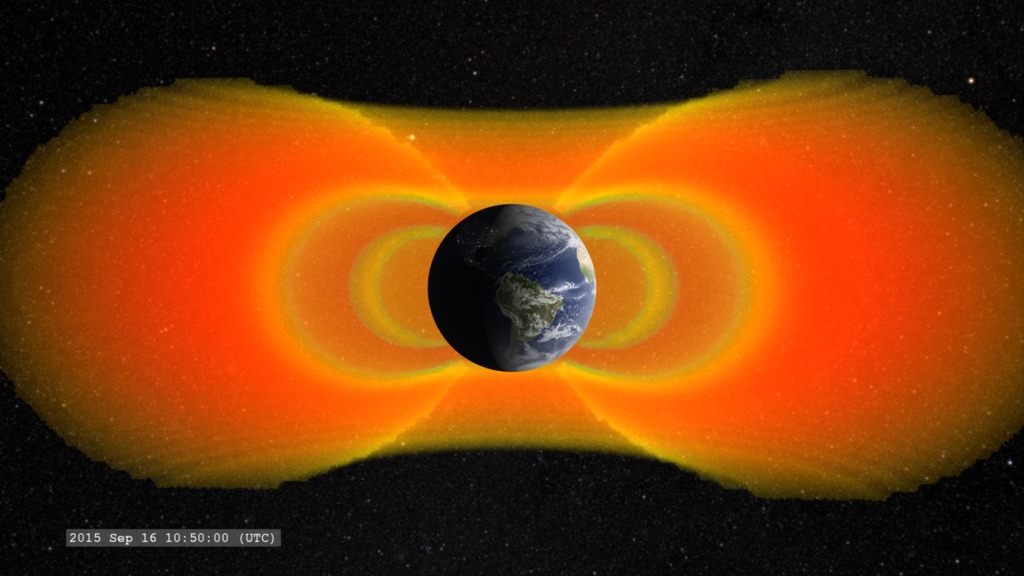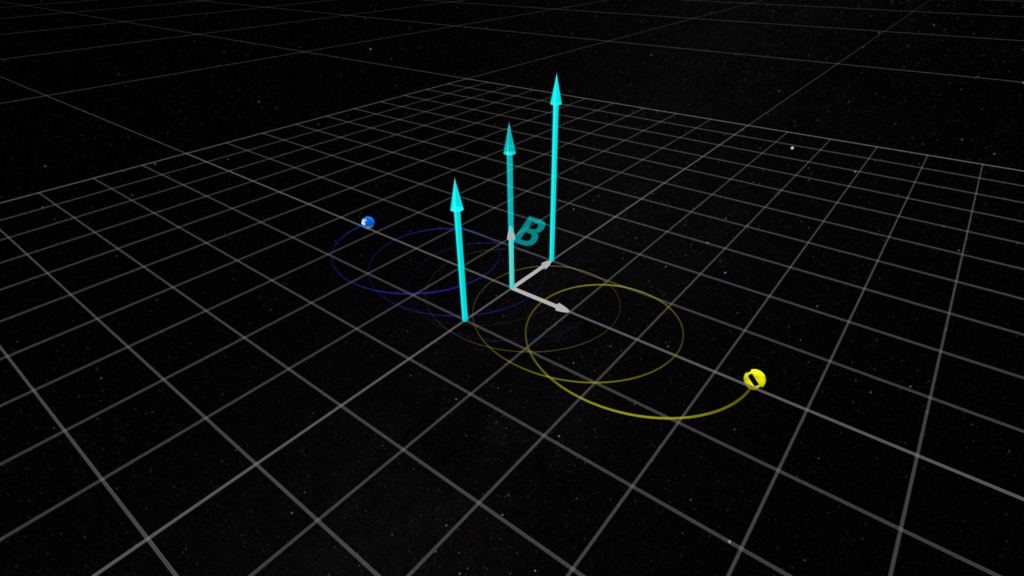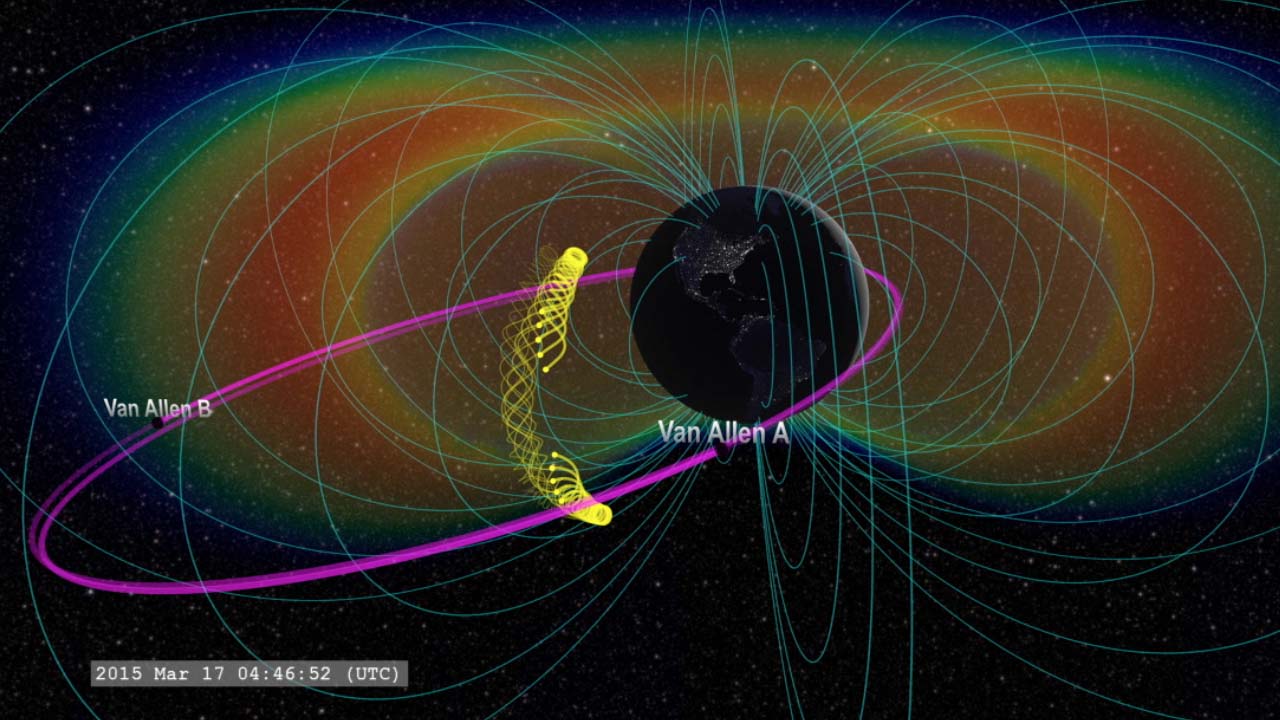Prompt Electron Acceleration in the Radiation Belts
Electrons gyrating along the lines of Earth's magnetic field make another orbit around Earth and strike the Van Allen Probe A AGAIN!
On March 17, 2016, Van Allen Probe A detected a pulse of high energy electrons in the radiation belts, generated by the impact of a recent coronal mass ejection striking Earth's magnetosphere. The gradient drift speed of the electron pulse was high enough, that it propagated completely around Earth and was detected by the spacecraft again as the pulse spread out in the radiation belt. Because the particles have a range of energies, the pulse spread out as it moved around Earth, generating a weaker signal the next time it hit the spacecraft.

Opening view of radiation belts and the orbits of the Van Allen probes.

A view of the Van Allen Probe orbits and the radiation belts sliced open for a cross-section view.

A pulse of electrons is injected into the radiation belts by impact of a passing coronal mass ejection (CME). The electrons gyrate around the magnetic field lines, mirroring at high and low latitudes.

Once the pulse of accelerated electrons are injected into the radiation belts, the magnetic gradient drift guides them around Earth where they serendipitiously strike the particle detectors of Van Allen Probe A.
Credits
Please give credit for this item to:
NASA's Scientific Visualization Studio
-
Visualizer
- Tom Bridgman (Global Science and Technology, Inc.)
-
Technical support
- Laurence Schuler (ADNET Systems, Inc.)
- Ian Jones (ADNET Systems, Inc.)
-
Producer
- Genna Duberstein (USRA)
-
Scientist
- Shrikanth G. Kanekal (NASA/GSFC)
Release date
This page was originally published on Monday, August 15, 2016.
This page was last updated on Tuesday, November 14, 2023 at 12:08 AM EST.
Missions
This visualization is related to the following missions:Datasets used in this visualization
-
ECT [Van Allen Probes: Energetic Particle, Composition, and Thermal Plasma Suite]
ID: 828 -
ParticleSimulator
ID: 846
Note: While we identify the data sets used in these visualizations, we do not store any further details, nor the data sets themselves on our site.



